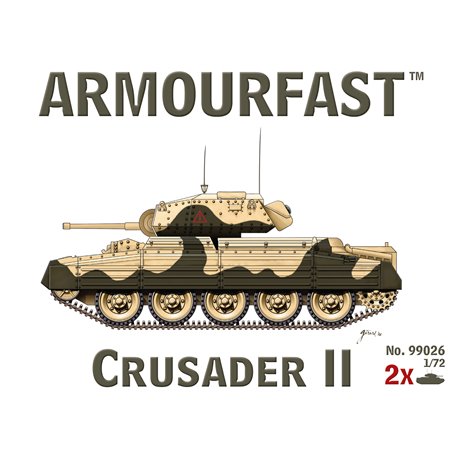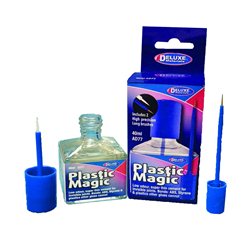No products
 View larger
View larger Crusader Mk.II (x2) 1/72 Tank plastic kit (UK)
DISC**arm99026
New product
Crusader Mk.II
The Crusader Mk. II was built for the British Army and was extensively used during the North African campaign in WWII. The Crusader was ideally suited for desert terrain and thanks to its speed it was the ideal vehicle for fast advances in this type of conflict...
This product is no longer in stock
More info
Crusader Mk.II
The Crusader Mk. II was built for the British Army and was extensively used during the North African campaign in WWII. The Crusader was ideally suited for desert terrain and thanks to its speed it was the ideal vehicle for fast advances in this type of conflict. However, due to its light armour (40-50mm at most) and moderate armament (the then standard 2 pounder), Crusader’s were not able to adequately match the German anti-tank guns and were vulnerable to the vast mine fields which inflicted substantial losses on the Allied forces.
The first Crusader tank prototype was delivered around April 1940 and was found to have serious defects, many of which should have been eliminated at the design stage. One of the more serious issues was the drivers head projected above his station while opened up “there is a danger of his head being cut off by the rear of the turret or hit by the gun if the turret rotated”. Other issues included injury to the driver when going over rough terrain, reliability and cooling. By September 1940 the driver’s position had improved but it still remained impossible for service use.
The Mk II Crusader tank was an uparmoured version of the Mk I, frontal armour was increased by up to 10mm and the roof was increased by 3mm. The tank was one of the primary cruiser tanks of the United Kingdom during WWII and, arguably, perhaps the most important British tank of the North African Campaign with over 5,300 being built.
The Crusader Mk I (and some Mk II) had, at the left-hand side of the front, mounted a small hand-traversed auxiliary turret, armed with a Besa machine gun. This was awkward to use and was often removed in the field or remained unoccupied. Early production vehicles had a “semi-internal” cast mantlet, which was quickly replaced in production by better protected big cast mantlet with three vertical slits, for the main gun and for a coaxial Besa machine-gun and for a sighting telescope.
The tank first saw combat during Operation Battleaxe and played a crucial role in the following Operation Crusader which was named after the tank. Although the Crusader was faster than any tanks it opposed, its potential was limited by a relatively light 2-pounder gun, thin armour and mechanical problems. A particular tactical limitation was the lack of high explosive (HE) shells for the main armament. Axis tank forces developed an extremely effective tactic of engaging British tanks by retiring behind a screen of concealed anti-tank guns. The pursuing tanks could then be engaged by the artillery. With the German anti-tank guns out of range of the tank’s machine guns, and without a high explosive shell to return fire, the tanks were left with the equally unpalatable options of either withdrawing under fire or trying to over-run the gun screen.
A 3” Howitzer was fitted to company support tanks and the Mk III version used the newly available 6pdr gun.After the completion of the North African Campaign, the availability of better tanks, such as the Sherman and Cromwell, relegated the Crusader to secondary duties such as anti-aircraft mounts or gun tractors. In these roles it served for the remainder of the war.



